1. Firing cannons to celebrate the Fourth of July
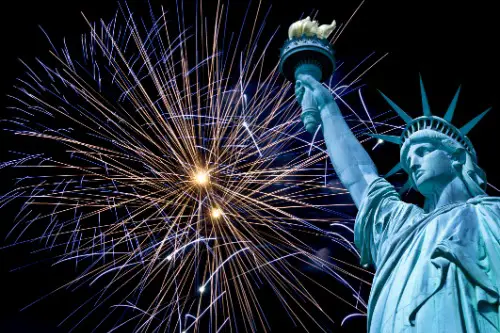
Back in the 18th and 19th centuries, it wasn’t uncommon for towns across America to fire cannons and fireworks to mark Independence Day, according to MountVernon.org. At the time, this was considered a symbol of patriotism and a way to honor the nation’s birth. However, today, the idea of firing large cannons in the middle of a community would seem reckless, dangerous, and completely out of place. Plus, with all the safety regulations around fireworks and gunpowder, it’s hard to imagine something as chaotic and loud as cannon fire being considered a national tradition today.
The idea of celebratory cannon firing wasn’t just limited to the Fourth of July either—it was often used in times of victory or national pride. But as cities grew, so did the awareness of public safety, and firing cannons in populated areas became a thing of the past. Now, we’ve got more controlled and organized firework displays that are a lot safer, much to the relief of everyone nearby. What was once a loud, chaotic expression of patriotism has now been replaced with organized, safe celebrations.
2. Drinking patriotic-themed cocktails
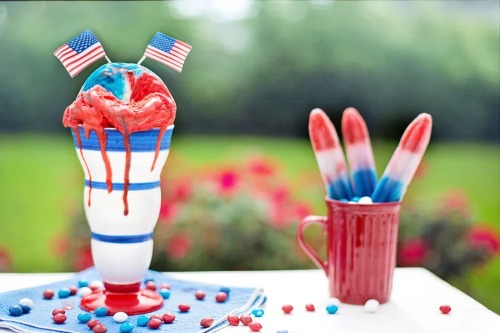
Back in the 1940s and 1950s, many bars and restaurants across the United States served special “patriotic” cocktails on holidays like the Fourth of July. These drinks were often made with red, white, and blue layers to visually represent the flag and symbolize American pride. Patriotic cocktails were a staple at barbecues, picnics, and parties, and drinking one was seen as a festive way to show support for your country, Karla Alindahao from Forbes explains. Today, however, these drinks seem pretty outdated and borderline kitschy, with their flashy colors and sugary ingredients.
Most people now opt for a more refined approach to enjoying their beverages, perhaps choosing local craft beers or classic cocktails, with less emphasis on creating over-the-top patriotic displays. There’s a sense that these overly stylized drinks don’t quite fit with modern sensibilities about food and drink. Instead, simpler, more thoughtful ways of expressing patriotism, such as through supporting local businesses or charities, are more widely embraced. Drinking in honor of the country has moved away from flashy cocktails and toward more understated, meaningful acts.
3. Wearing military uniforms for everyday life

In the early 20th century, it wasn’t unusual to see civilians—especially young men—wearing military-inspired clothing as a sign of national pride, according to Permanent Style. After World War I, military uniforms, including the infamous “doughboy” hats, became somewhat of a fashion statement in parts of the country. This was seen as a patriotic way to honor the troops and show solidarity with the nation. But today, the idea of wearing military garb just to show patriotism would raise eyebrows and likely be seen as odd or even disrespectful in some circles.
While military uniforms are still worn with pride by actual servicemen and women, civilian wear has dramatically shifted. With the growing recognition of the difference between real service and military “cosplay,” it’s clear that using military clothing as everyday wear is no longer an acceptable form of patriotism. Now, it’s more common to see flag pins, red, white, and blue apparel, or even vintage American flag-inspired styles to show pride without crossing a line. Wearing actual military attire for fashion simply feels out of place today.
4. Sending soldiers off with huge parades
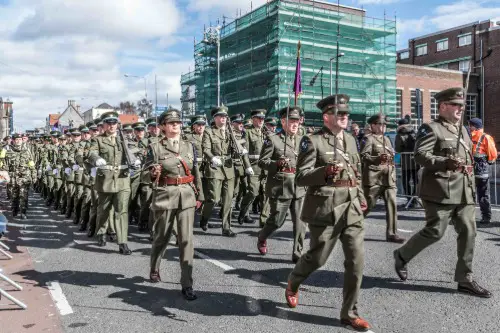
In the early 1900s, whenever soldiers were shipped off to war, they were often given massive parades as a public send-off, Maris Fessenden from Smithsonian Magazine explains. These events were seen as a way to publicly honor their bravery and dedication to the country. The whole community would come together to celebrate their service before they left for battle, and it was considered a patriotic tradition. However, these days, with the complexity of modern warfare and the emotional toll on soldiers, a large, celebratory parade feels inappropriate for such somber circumstances.
While there’s still support for troops, the focus has shifted more toward creating quiet, respectful moments for families and individuals rather than grand public displays. Instead of parades, there’s a greater emphasis on providing veterans and active-duty service members with support and care during and after their service. This shift in approach is a reflection of how we view war and its effects on soldiers and their families in a more compassionate, nuanced way.
5. Patriotic haircuts
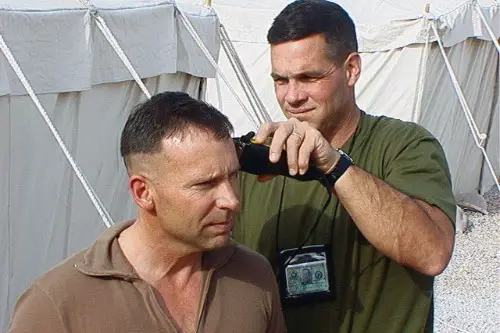
In the 1800s, especially following the Revolutionary War, it was common for men to sport haircuts that symbolized their patriotism—like the iconic “pioneer” look with short, cropped hair. During the 20th century, especially after World War II, military-style buzz cuts became popular as symbols of patriotism and national service. The idea was that these haircuts represented discipline, loyalty, and a strong sense of national pride. Today, the concept of patriotic haircuts has faded, and no one really thinks of a certain hairstyle as “patriotic.”
Instead, individual expression through hairstyles has become more popular, with everyone from businessmen to rock stars sporting diverse looks. A close-cropped haircut no longer carries the same connotations of national pride, as people are more likely to judge you by your actions rather than your appearance. In fact, trying to wear a certain hairstyle for the sake of patriotism today might just seem odd, as it’s far more about personal choice and comfort rather than serving a symbolic national purpose.
6. The “Victory Garden” movement
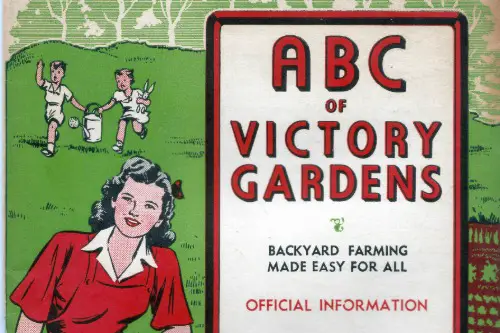
During both World Wars, Americans were encouraged to plant their own “Victory Gardens” to support the war effort, Jennifer Steinhauer from The New York Times explains. The idea was that by growing their own fruits and vegetables, citizens would help free up resources for soldiers, allowing more food to be sent overseas. These gardens were considered a patriotic duty, and even the government supported the movement with guides and promotional materials. While gardening still remains a popular hobby, the patriotic push behind planting your own food is now a curious relic of wartime.
Today, gardening is seen more as a lifestyle choice or hobby rather than a necessity tied to national survival. With modern transportation and global food networks, there’s no real need for citizens to grow their own crops in the name of patriotism. It’s a quirky reminder of a time when war affected daily life in such tangible ways, influencing even the food we ate. However, gardening for sustainability or environmental reasons has replaced that wartime urgency.
7. Buying “patriotic” clothing like Uncle Sam costumes
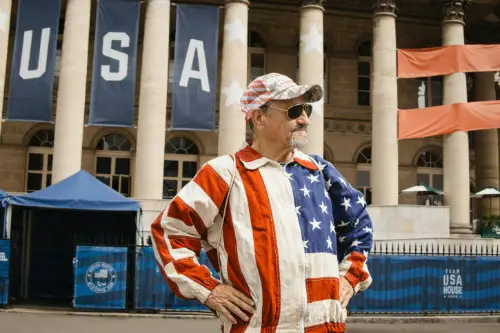
In the early 20th century, especially during World War I and World War II, dressing in “patriotic” clothing—think red, white, and blue or full Uncle Sam costumes—was a common and accepted way to show your American pride. People wore these outfits to public celebrations, parades, and even to work or school on national holidays. The over-the-top nature of the outfits was seen as an expression of enthusiasm and national loyalty. But today, walking around in an Uncle Sam outfit or other similar garb would be seen as strange, even cartoonish.
Instead, patriotism has become more subtle and less about dressing up in a costume. People still wear flag-inspired clothing or accessories, but it’s typically in the form of more understated items like flag pins or T-shirts. Today, patriotism tends to be less about dressing the part and more about participating in meaningful ways that show pride in the country. Wearing an Uncle Sam hat now feels more like something you’d wear to a novelty shop rather than a patriotic statement.
8. Reenacting battles
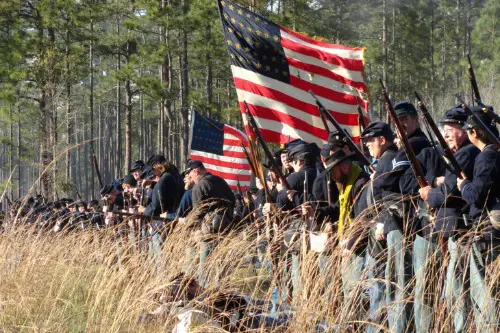
In the 1800s and early 1900s, reenacting famous American battles was considered a patriotic way to honor military history. People would dress up in period costumes, carry replicas of weapons, and stage re-enactments of Civil War, Revolutionary War, or World War II battles. It was viewed as a respectful tribute to soldiers and a way to teach future generations about the sacrifices made in these conflicts. Today, however, many see this tradition as a bit bizarre, especially when the reenactments are overly theatrical or insensitive to the actual violence and trauma involved.
Reenacting battles, especially Civil War battles, has become controversial due to the historical context and the troubling legacy of slavery. The practice of staging these violent events, while meant to honor history, can feel uncomfortable to those who see it as glorifying war or erasing the deeper societal issues at play. Today, we’re more focused on commemorating history in a way that fosters understanding and healing, rather than glorifying the past. Reenactments are still popular with some, but they carry a different, more complex significance than they once did.
9. The “American Dream” as a symbol of patriotism
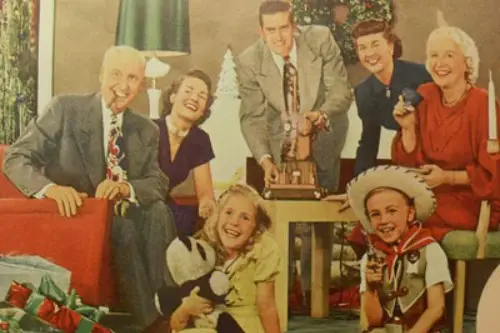
The concept of the “American Dream” has long been considered a patriotic ideal—this belief that anyone, regardless of their background, could succeed if they worked hard enough. For much of the 20th century, it was seen as the ultimate symbol of American pride and the nation’s promise of opportunity. But today, the idea of the “American Dream” is much more complicated, with many questioning whether it’s achievable for everyone in modern society. The notion has become increasingly tied to economic inequality, with many people now seeing it as a relic of an idealized past that doesn’t match reality.
In contemporary discussions of patriotism, the focus has shifted from a “one-size-fits-all” ideal of success to recognizing the diversity of American experiences. People are beginning to focus more on issues like systemic change, equity, and the country’s imperfections rather than simply promoting the idea that anyone can “make it” in America. While the “American Dream” still has some positive connotations, it’s no longer universally seen as the shining beacon of patriotism it once was. Today, patriotism is more often expressed through the pursuit of a more inclusive and just society.
10. The Pledge of Allegiance in schools every day
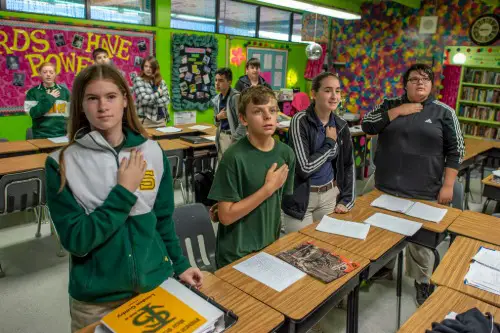
For many years, saying the Pledge of Allegiance every morning in schools across the country was considered a foundational patriotic practice. Children were taught to stand up, face the flag, and recite the pledge, reinforcing national pride and loyalty from an early age. But over the years, the practice has become increasingly controversial, with some questioning the appropriateness of requiring students to pledge allegiance to a symbol, especially in a diverse society. In some places, the pledge is now optional, and it’s seen less as a patriotic tradition and more as a matter of personal choice.
While some still view the daily recitation as an important tradition, others believe it’s outdated and fails to address the complexities of American identity. Today, discussions about the pledge often focus on freedom of speech and the importance of respecting diverse viewpoints, even in the classroom. The once-unquestioned act of pledging allegiance now raises more questions than it answers about how we understand patriotism and national loyalty in the 21st century. It’s a good example of how traditions can evolve as societal norms and values shift.
11. Flying the flag at every opportunity
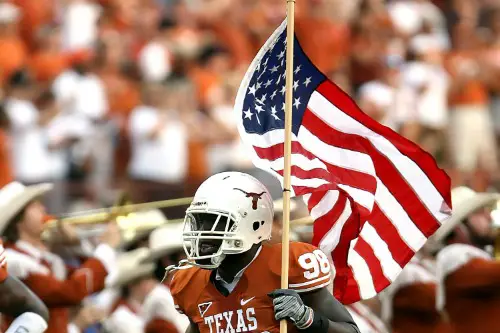
In the past, it was considered deeply patriotic to fly the American flag in front of your house year-round or at every major holiday. The flag was a constant symbol of pride and unity, especially during times of war or national crisis. However, in modern times, the act of flying the flag can sometimes carry political overtones, depending on who’s doing it and when. In certain communities, it’s become almost expected for certain political groups to display the flag, which can make the gesture seem less like a unified symbol and more like a partisan statement.
As the flag has become a tool for political expression, many Americans now find themselves thinking more critically about how and when to display it. While it’s still an important symbol of patriotism, the practice of flying the flag has become more nuanced, with people considering the meaning behind the display. Instead of flying it constantly, some now prefer to save it for significant moments like national holidays or times of national tragedy. This shift reflects a broader trend toward more thoughtful and deliberate expressions of patriotism.
12. “God Bless America” as a daily anthem

“God Bless America” was once a song that united Americans, particularly in the years following major national crises like the September 11 attacks. It became a symbol of national solidarity and pride, sung in schools, public gatherings, and even during sporting events. However, over time, its use as a daily anthem has become increasingly controversial, especially in a country that values religious freedom and separation of church and state. Today, hearing the song everywhere might feel out of place, especially in a more secular, diverse society.
While the song’s intent is still patriotic for many, the connection between religion and national identity can be off-putting for others. The country’s growing religious diversity means that expressions of patriotism that center on religion can leave some feeling excluded. Instead, more inclusive symbols of national pride, like the national anthem or various civic observances, are becoming the go-to for uniting citizens across beliefs. “God Bless America” may still have sentimental value, but its daily use feels disconnected from the evolving idea of a more inclusive, pluralistic nation.


